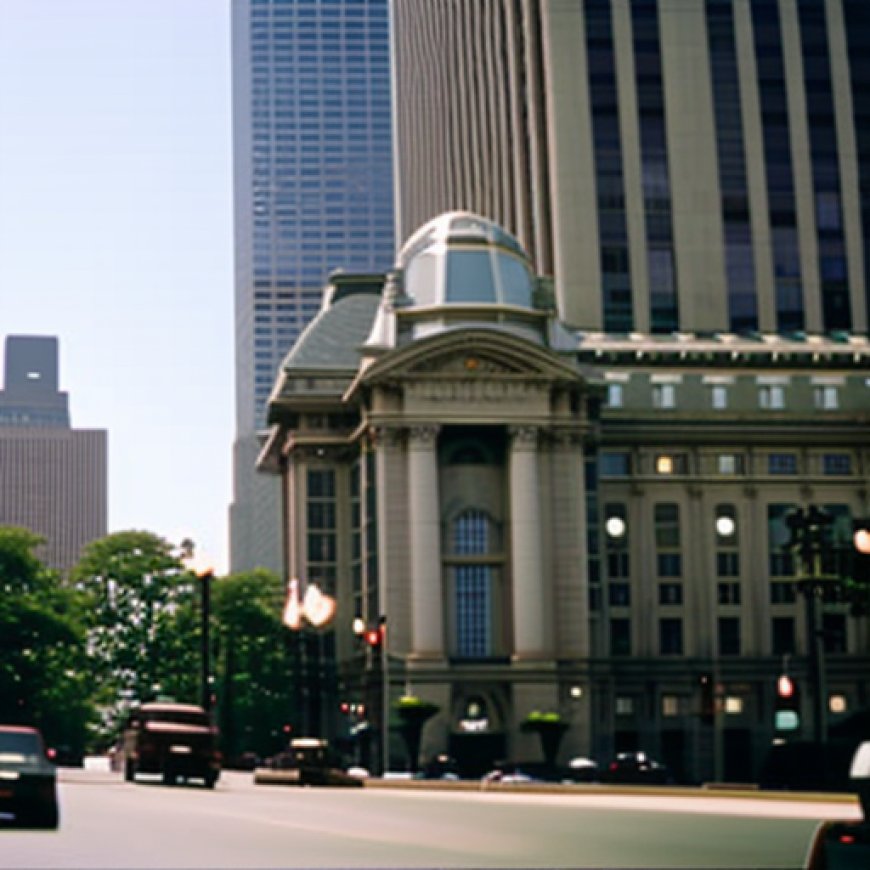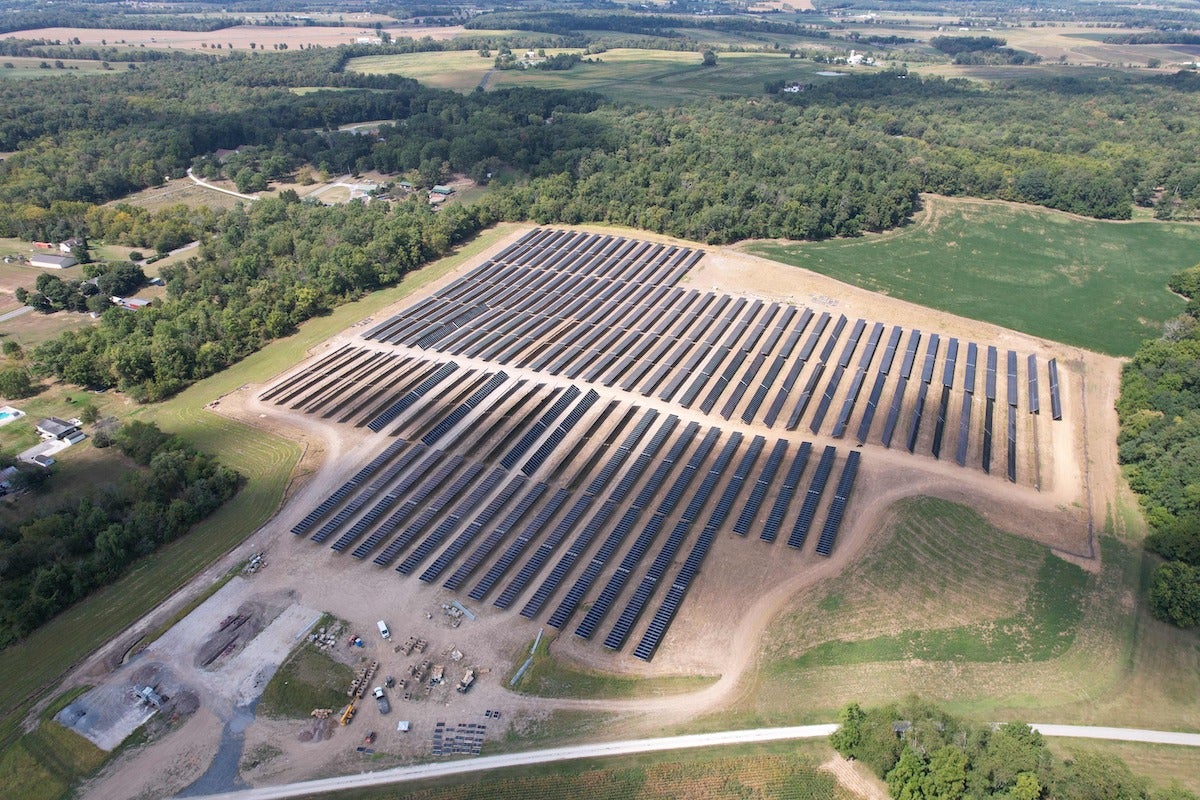25% of Philly’s municipal buildings now run on solar power
Philly's Adams Solar Farm powers 25% of city buildings WHYY


Philadelphia Increases Solar Power Usage in Municipal Buildings

Introduction
Philadelphia has made significant progress in utilizing solar power for its municipal buildings, with approximately 25% of the electricity now coming from solar energy. This achievement aligns with the city’s commitment to the Sustainable Development Goals (SDGs) and its efforts to combat climate change and promote sustainability.
Adams Solar Farm
The Adams Solar Farm, located near Gettysburg, consists of a 230,000-panel solar array that began generating energy in late March. The city has entered into a 20-year agreement to purchase most of the farm’s power, demonstrating its long-term commitment to renewable energy sources.
Mayor’s Statement
Mayor Cherelle Parker emphasized the city’s dedication to building a sustainable future for Philadelphians and combating climate change. She expressed her support for renewable energy initiatives during a press event celebrating the completion of the solar farm.
Sustainable Development Goals
- SDG 7: Affordable and Clean Energy
- SDG 13: Climate Action
- SDG 11: Sustainable Cities and Communities
Impact on Electricity Usage
The city’s purchase of 70 megawatts of power from the Adams Solar Farm is sufficient to power more than 17,000 rowhouses. This significant increase in renewable energy usage brings Philadelphia’s overall electricity consumption to 30% renewable, although it falls short of the city’s target of 100% renewable energy by 2029.
Future Plans
The city has released a new request for proposals to power all municipal buildings with wind or solar energy by 2030. This initiative aligns with the city’s goal to reduce greenhouse gas emissions from city-owned buildings by 50% and decrease municipal energy use by 20% by 2030.
Challenges and Solutions
The Adams Solar Farm project faced several delays, with three different developers failing to complete the project. However, Energix Renewables now owns and operates the solar farm. The city’s 20-year contract ensures a stable price for renewable power, protecting taxpayers from potential increases in gas-powered electricity rates.
Transition Away from Gas
While the city’s 2030 goal of using only renewable electricity in municipal buildings does not require a complete transition away from gas, the city’s long-term goal of carbon neutrality by 2050 is likely to necessitate such a transition. The city currently owns Philadelphia Gas Works, the natural gas utility, which recently received budgetary approval for new natural gas infrastructure.
Conclusion
Philadelphia’s increased utilization of solar power in municipal buildings demonstrates its commitment to sustainable development and the SDGs. The city’s efforts to transition to renewable energy sources contribute to the global goals of affordable and clean energy, climate action, and sustainable cities and communities. By continuing to pursue ambitious and environmentally beneficial projects like the Adams Solar Farm, Philadelphia sets an example for other cities striving for a more sustainable future.
Sources:
- PlanPhilly – Adams Solar Farm Powers 25% of Philadelphia’s Municipal Buildings
- Philadelphia Municipal Energy Master Plan
- NBC10 – Delays in Philadelphia’s Clean Energy Goals
- Philadelphia Renewable Energy Procurement Request for Proposals
- WHYY – Philadelphia Aims to Be Carbon Neutral by 2050
- U.S. Energy Information Administration – Pennsylvania Electricity Generation Sources
SDGs, Targets, and Indicators
1. Which SDGs are addressed or connected to the issues highlighted in the article?
- SDG 7: Affordable and Clean Energy
- SDG 11: Sustainable Cities and Communities
- SDG 13: Climate Action
2. What specific targets under those SDGs can be identified based on the article’s content?
- SDG 7.2: Increase substantially the share of renewable energy in the global energy mix.
- SDG 11.6: Reduce the adverse per capita environmental impact of cities, including by paying special attention to air quality and municipal and other waste management.
- SDG 13.2: Integrate climate change measures into national policies, strategies, and planning.
3. Are there any indicators mentioned or implied in the article that can be used to measure progress towards the identified targets?
- Percentage of electricity from solar power in Philadelphia’s municipal buildings.
- Percentage of renewable electricity used in municipal buildings.
- Reduction in greenhouse gas emissions from city-owned buildings.
- Reduction in municipal energy use.
Table: SDGs, Targets, and Indicators
| SDGs | Targets | Indicators |
|---|---|---|
| SDG 7: Affordable and Clean Energy | SDG 7.2: Increase substantially the share of renewable energy in the global energy mix. | Percentage of electricity from solar power in Philadelphia’s municipal buildings. |
| SDG 11: Sustainable Cities and Communities | SDG 11.6: Reduce the adverse per capita environmental impact of cities, including by paying special attention to air quality and municipal and other waste management. | Percentage of renewable electricity used in municipal buildings. |
| SDG 13: Climate Action | SDG 13.2: Integrate climate change measures into national policies, strategies, and planning. | Reduction in greenhouse gas emissions from city-owned buildings. Reduction in municipal energy use. |
Copyright: Dive into this article, curated with care by SDG Investors Inc. Our advanced AI technology searches through vast amounts of data to spotlight how we are all moving forward with the Sustainable Development Goals. While we own the rights to this content, we invite you to share it to help spread knowledge and spark action on the SDGs.
Fuente: whyy.org

Join us, as fellow seekers of change, on a transformative journey at https://sdgtalks.ai/welcome, where you can become a member and actively contribute to shaping a brighter future.







